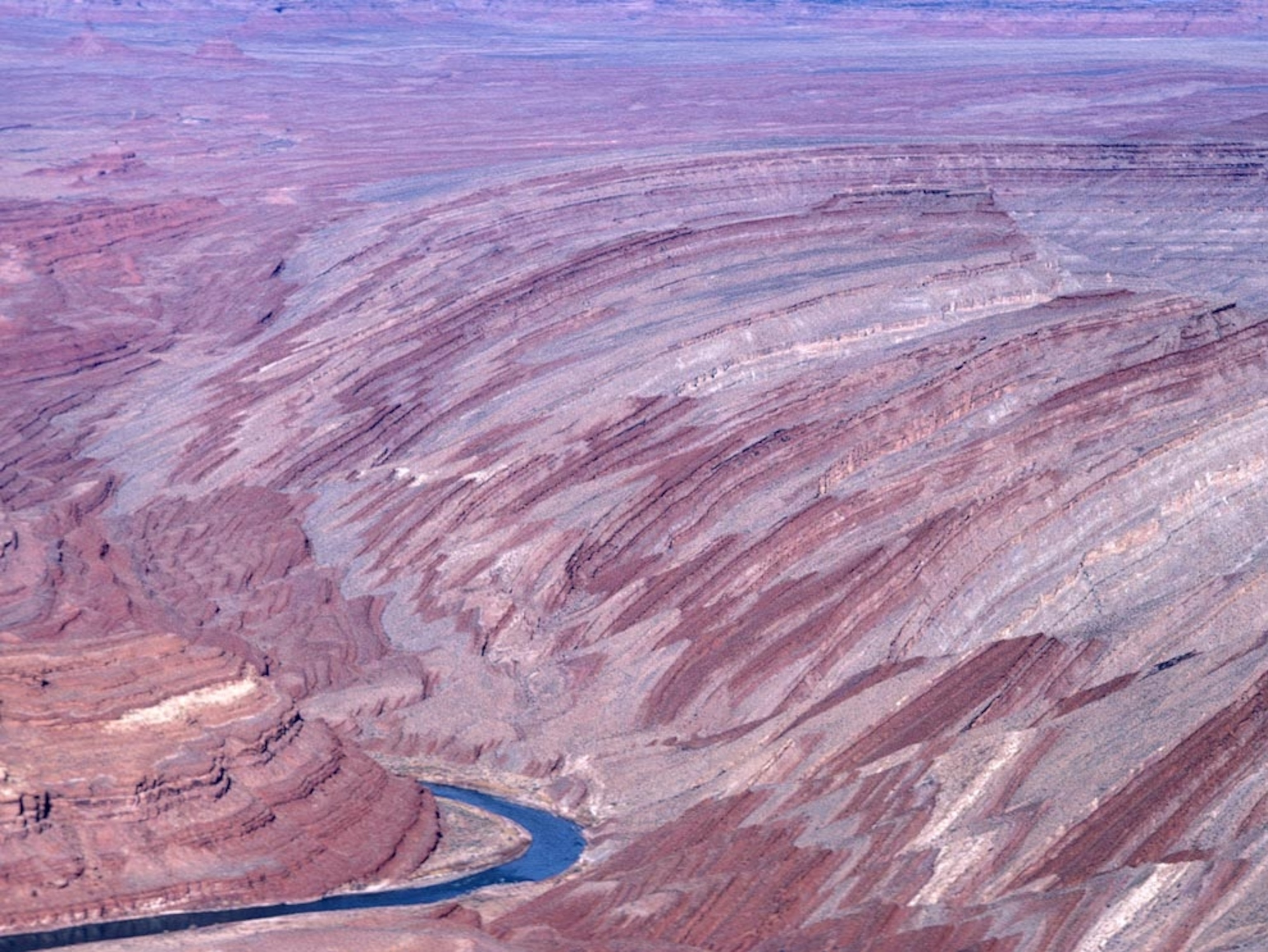By the time you finish reading this article, two earthquakes will likely have rippled through Southern California.
This estimate comes from a new study, published today in Science, that dug through seismic data between 2008 and 2017 and found that Southern California experienced a startling 1.81 million temblors during that decade. That's an order of magnitude more than previously documented, with an earthquake striking roughly every three minutes.
Of course, the vast majority of these quakes are so weak they are imperceptible to humans. But this updated earthquake catalog, the most complete yet compiled, promises to help scientists better understand the basic physics behind earthquakes big and small.
“With seismology, we pretty much have to sit around and wait for events to occur in order to collect data,” says study author Zachary Ross of the California Institute of Technology. Since large earthquakes are rare, cataloging the tiniest of quakes provides the researchers with a vast untapped dataset that will now allow them to dig deeper and better study the patterns and relationships between events.
“It’s kind of like having a better telescope to see stars and planets in space more clearly; sharpening our view of the Earth, in this case,” adds David Shelly of the U.S. Geological Survey, who was not involved with the work.
A powerful idea
Earthquakes in California are not uncommon. The region is locked in a slow-motion tectonic collision, as the Pacific plate grinds its northwesterly path against the North American plate. These built-up tensions are occasionally released in ground-rattling quakes.
It's also not exactly news that little earthquakes are much more common than big ones. That idea was first proposed in the mid 1900s by seismologists Charles Francis Richter—of the Richter magnitude scale—and Beno Gutenberg, who observed that earthquake frequency increases by roughly 10 times with each unit decrease in quake magnitude.
“It’s not surprising that teeny tiny earthquakes are popping off all the time. We just haven’t been able to see them before,” says Susan Hough of the USGS, who was not on the study team.
The trick is the remarkable sensitivity of modern seismometers, which pick up all manner of rattles and roars—the crash of ocean waves, the rumble of automobile traffic, and perhaps even the occasional boisterous crowd. On the lower end, telling what's an earthquake and what's just noise is far from easy.
“We are now talking about events that are all the way down at the noise floor of these very sensitive instruments,” Ross says.
For nearly a decade and a half, scientists have been experimenting with a method known as template matching to tease the two apart. When earthquakes initiate in nearly the same spot underground, they produce similar looking squiggles on a seismograph. Changes in magnitude may cause them to stretch up or down, Ross explains, “but the actual wiggles on the thing look almost identical.”
Researchers can exploit this property to find tiny earthquakes, using a catalog of larger known quakes as a guide. Scientists previously applied this concept to small regions or short periods of time, but until now, no one had attempted template matching for such a long period across such a large region.
The scientists used data collected by the Southern California Seismic Network, a joint project between Caltech and the USGS, that monitors activity from the Mexico border north to San Luis Obispo and Big Pine. The organization faithfully collects seismic information from hundreds of stations around the clock, using computer algorithms to identify earthquakes. Then, professional seismic analysts review the data.
“They’re looking for everything from the very largest to the very smallest event,” Ross says. The verified data is then compiled into a catalog for the public.
The previous catalog for 2008 to 2017 for Southern California contained 180,000 earthquakes and was nearly complete for events greater than magnitude 1.7. But using template matching backed by supercomputing power, the new catalog expands that number to 1.81 million events and is nearly complete for quakes as small as magnitude 0.3.
“It was a heck of a lot of computational work that they did,” says Suzan van der Lee of Northwestern University, who was not involved in the study. Beyond the potential for this new pool of earthquake info in California, she sees setting up the infrastructure, both hardware and software, as an important facet of the work. “Now others don’t have to invent that same wheel.”
The language of temblors
Ross and his colleagues have already spotted some intriguing patterns in the data, such as quake clustering. If earthquake clusters are like sentences, the tiny earthquakes are the vowels. Without them, you might be able to pick out a word here or there, but it's tough to figure out if the letters form complete phrases. In this way, many past earthquakes seem like random, unrelated background events.
But add in the vowels, and suddenly a whole geologic syntax emerges.
“In our new catalog, a lot of that randomness is really actually clusters,” Ross says. “These are not isolated events.” While he cautions that there are still some seemingly unconnected quakes, “I think it’s going to have an impact in how we think about the evolution of these sequences.”
“It’s not surprising that teeny tiny earthquakes are popping off all the time. We just haven’t been able to see them before."Susan Hough, United States Geological Survey
Some large events also seem to have much more widespread influence than previously thought. This is particularly evident when looking at the magnitude 7.2 Baja California quake that gripped the region in the spring of 2010. A series of aftershocks followed, some shaking just over a hundred miles away. But in the new dataset, the researchers found that the aftershocks actually extended nearly twice as far, lighting up seismographs across Southern California some 170 miles from the earthquake epicenter.
Seismologist Meghan Miller of the Australian National University found this to be the most exciting piece of the work, “just being able to see how much of an effect that large earthquake had on all of Southern California seismicity.”
These earthquakes are also important for mapping faults in three dimensions throughout the region. For instance, the tiny quakes along the Coyote Creek fault revealed that, although the fault may seem linear at the surface, it's actually curved at depth. Understanding such intricacies of the fractures deep inside Earth helps scientists construct more realistic models of their movements and links to other nearby faults.
“We use little earthquakes to illuminate active faults, and the more earthquakes you have, the better job you can do,” Hough says.
Earthquake siblings
The work does have its limits. For one, template matching requires a large enough catalog of past earthquakes in any given region. “That has actually some pretty fundamental implications for this work,” Ross says.
photos reveal our restless planet












It's a problem for using the method on the San Andreas fault, a fracture that runs nearly the length of California and poses some of the greatest geologic hazards to the region. Large sections don't host such small earthquakes.
For areas like the U.S. Midwest, van der Lee says, template matching is also a challenge since earthquake monitoring is scarce and quakes are relatively infrequent. Without past quake templates, many true earthquake signals are left out of the data. Even so, she notes, some of these rumbles may have similar features to known quakes. She likens these signals to identical twins and their other siblings. The identical twins are the signals included in this new catalog, but they will still have things in common with their other siblings, which means it might be possible to figure out how to include those siblings in the data.
One solution to the lack of templates, Ross says, will likely be the use of artificial intelligence, which has already started to transform many scientific disciplines, from our understanding of biological life to the search for other worlds. Until then, however, this new coterie of quakes is plenty to keep scientists busy.
“It’s just a really rich catalog,” Shelly says. “I think it is going to be a really exciting dataset that people will comb over for years and decades to come.”
Related Topics
You May Also Like
Go Further
Animals
- Octopuses have a lot of secrets. Can you guess 8 of them?
- Animals
- Feature
Octopuses have a lot of secrets. Can you guess 8 of them? - This biologist and her rescue dog help protect bears in the AndesThis biologist and her rescue dog help protect bears in the Andes
- An octopus invited this writer into her tank—and her secret worldAn octopus invited this writer into her tank—and her secret world
- Peace-loving bonobos are more aggressive than we thoughtPeace-loving bonobos are more aggressive than we thought
Environment
- This ancient society tried to stop El Niño—with child sacrificeThis ancient society tried to stop El Niño—with child sacrifice
- U.S. plans to clean its drinking water. What does that mean?U.S. plans to clean its drinking water. What does that mean?
- Food systems: supporting the triangle of food security, Video Story
- Paid Content
Food systems: supporting the triangle of food security - Will we ever solve the mystery of the Mima mounds?Will we ever solve the mystery of the Mima mounds?
- Are synthetic diamonds really better for the planet?Are synthetic diamonds really better for the planet?
- This year's cherry blossom peak bloom was a warning signThis year's cherry blossom peak bloom was a warning sign
History & Culture
- Strange clues in a Maya temple reveal a fiery political dramaStrange clues in a Maya temple reveal a fiery political drama
- How technology is revealing secrets in these ancient scrollsHow technology is revealing secrets in these ancient scrolls
- Pilgrimages aren’t just spiritual anymore. They’re a workout.Pilgrimages aren’t just spiritual anymore. They’re a workout.
- This ancient society tried to stop El Niño—with child sacrificeThis ancient society tried to stop El Niño—with child sacrifice
- This ancient cure was just revived in a lab. Does it work?This ancient cure was just revived in a lab. Does it work?
- See how ancient Indigenous artists left their markSee how ancient Indigenous artists left their mark
Science
- Jupiter’s volcanic moon Io has been erupting for billions of yearsJupiter’s volcanic moon Io has been erupting for billions of years
- This 80-foot-long sea monster was the killer whale of its timeThis 80-foot-long sea monster was the killer whale of its time
- Every 80 years, this star appears in the sky—and it’s almost timeEvery 80 years, this star appears in the sky—and it’s almost time
- How do you create your own ‘Blue Zone’? Here are 6 tipsHow do you create your own ‘Blue Zone’? Here are 6 tips
- Why outdoor adventure is important for women as they ageWhy outdoor adventure is important for women as they age
Travel
- This royal city lies in the shadow of Kuala LumpurThis royal city lies in the shadow of Kuala Lumpur
- This author tells the story of crypto-trading Mongolian nomadsThis author tells the story of crypto-trading Mongolian nomads
- Slow-roasted meats and fluffy dumplings in the Czech capitalSlow-roasted meats and fluffy dumplings in the Czech capital








